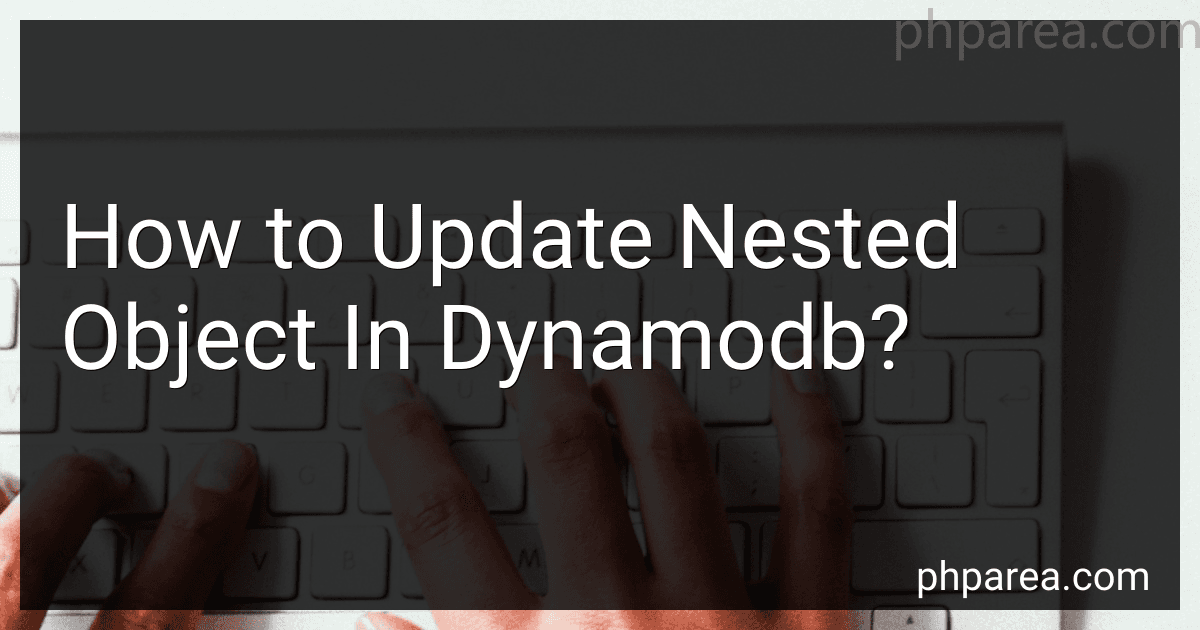PHP Blog
-
 14 min readTo convert CSV data to JSON format with a real-time database, you first need to read the CSV data using a library like pandas in Python or by using native CSV functions in other languages like JavaScript. Once the CSV is read into an in-memory data structure like a dataframe or an array, you can transform this data into a JSON object. Next, connect to your real-time database (e.g., Firebase, AWS DynamoDB, or any similar service) using the appropriate SDK or API.
14 min readTo convert CSV data to JSON format with a real-time database, you first need to read the CSV data using a library like pandas in Python or by using native CSV functions in other languages like JavaScript. Once the CSV is read into an in-memory data structure like a dataframe or an array, you can transform this data into a JSON object. Next, connect to your real-time database (e.g., Firebase, AWS DynamoDB, or any similar service) using the appropriate SDK or API.
-
 12 min readTo store time in "hh:mm" format in MongoDB, it's common to store it as a string. MongoDB itself does not have a specific data type for time-only values without dates, so strings are often used to maintain the format. When querying or manipulating these values, you'll handle them as strings. Alternatively, you could store time as a Date object with a fixed date component or use an integer value representing the total minutes since midnight.
12 min readTo store time in "hh:mm" format in MongoDB, it's common to store it as a string. MongoDB itself does not have a specific data type for time-only values without dates, so strings are often used to maintain the format. When querying or manipulating these values, you'll handle them as strings. Alternatively, you could store time as a Date object with a fixed date component or use an integer value representing the total minutes since midnight.
-
 11 min readTo perform a multi-hash Redis query, you typically need to interact with multiple hash data structures stored in Redis. Redis hashes are ideal for representing objects because they store field-value pairs in a key. When you need to execute a query that involves multiple hashes, you're likely attempting to either combine, filter, or aggregate data from these structures.Firstly, you'll need to use a Redis client compatible with your programming language.
11 min readTo perform a multi-hash Redis query, you typically need to interact with multiple hash data structures stored in Redis. Redis hashes are ideal for representing objects because they store field-value pairs in a key. When you need to execute a query that involves multiple hashes, you're likely attempting to either combine, filter, or aggregate data from these structures.Firstly, you'll need to use a Redis client compatible with your programming language.
-
 12 min readTo insert data into MongoDB without duplicates, you can use the insertOne or insertMany methods along with certain strategies to prevent duplication. One effective approach is to define a unique index on the fields that should be unique across documents. When a unique index is in place, MongoDB will automatically reject any insertions or updates that would result in duplicate values for those fields.
12 min readTo insert data into MongoDB without duplicates, you can use the insertOne or insertMany methods along with certain strategies to prevent duplication. One effective approach is to define a unique index on the fields that should be unique across documents. When a unique index is in place, MongoDB will automatically reject any insertions or updates that would result in duplicate values for those fields.
-
 11 min readTo update an array of objects in MongoDB, you can use the $set, $push, $pull, and $update operators within an update operation. The $set operator allows you to modify elements at specific positions within the array by using the dot notation to specify the index of the element. The $push operator adds new elements to the end of the array, while $pull removes elements that match a specified condition.
11 min readTo update an array of objects in MongoDB, you can use the $set, $push, $pull, and $update operators within an update operation. The $set operator allows you to modify elements at specific positions within the array by using the dot notation to specify the index of the element. The $push operator adds new elements to the end of the array, while $pull removes elements that match a specified condition.
-
 5 min readTo update an array of objects for multiple documents in MongoDB, you can use the $addToSet or $push operators in combination with the update method. First, you need to specify the criteria for selecting the documents to be updated using the find method. Then, you can use the update method to add or push new objects to the array field in the selected documents. Make sure to use the multi option to update multiple documents at once.
5 min readTo update an array of objects for multiple documents in MongoDB, you can use the $addToSet or $push operators in combination with the update method. First, you need to specify the criteria for selecting the documents to be updated using the find method. Then, you can use the update method to add or push new objects to the array field in the selected documents. Make sure to use the multi option to update multiple documents at once.
-
 5 min readTo fetch field names inside an array of collections in MongoDB, you can use the db.collection.distinct() method. This method returns an array of field names from all the documents in a collection. You can specify the field name you want to fetch within the distinct method as a parameter.For example, to fetch all the field names inside an array of collection called 'users', you can use the following query: db.users.
5 min readTo fetch field names inside an array of collections in MongoDB, you can use the db.collection.distinct() method. This method returns an array of field names from all the documents in a collection. You can specify the field name you want to fetch within the distinct method as a parameter.For example, to fetch all the field names inside an array of collection called 'users', you can use the following query: db.users.
-
 6 min readTo create a collection in a document in MongoDB, you first need to have a database created in which you want to store your collection. Once you have your database set up, you can use the db.createCollection() method in MongoDB to create a new collection within that database.You can specify the name of the collection that you want to create as a parameter in the createCollection() method.
6 min readTo create a collection in a document in MongoDB, you first need to have a database created in which you want to store your collection. Once you have your database set up, you can use the db.createCollection() method in MongoDB to create a new collection within that database.You can specify the name of the collection that you want to create as a parameter in the createCollection() method.
-
 6 min readTo aggregate two collections in MongoDB using $group, $lookup, and $match together, you can first use the $lookup stage to join the two collections based on a common field. Next, you can use the $match stage to filter the documents based on specified criteria. Finally, you can use the $group stage to group the documents together based on a specific field and perform aggregation functions such as counting, summing, or averaging.
6 min readTo aggregate two collections in MongoDB using $group, $lookup, and $match together, you can first use the $lookup stage to join the two collections based on a common field. Next, you can use the $match stage to filter the documents based on specified criteria. Finally, you can use the $group stage to group the documents together based on a specific field and perform aggregation functions such as counting, summing, or averaging.
-
 6 min readTo make array elements unique in MongoDB, you can use the $addToSet operator in combination with the $each modifier. This allows you to add elements to the array only if they are not already present. By using $addToSet with $each, you can ensure that duplicate elements are not added to the array.Here's an example of how you can use $addToSet with $each to make array elements unique in MongoDB:db.collection.
6 min readTo make array elements unique in MongoDB, you can use the $addToSet operator in combination with the $each modifier. This allows you to add elements to the array only if they are not already present. By using $addToSet with $each, you can ensure that duplicate elements are not added to the array.Here's an example of how you can use $addToSet with $each to make array elements unique in MongoDB:db.collection.
-
 7 min readTo update a nested object in DynamoDB, you can use the UpdateItem API operation. You will need to specify the key of the item you want to update, and then provide the update expression to modify the nested object within the item. The update expression should use the SET keyword to specify the attribute path to the nested object and the new value you want to set. Make sure to follow the correct syntax and data types for the update expression to avoid any errors.
7 min readTo update a nested object in DynamoDB, you can use the UpdateItem API operation. You will need to specify the key of the item you want to update, and then provide the update expression to modify the nested object within the item. The update expression should use the SET keyword to specify the attribute path to the nested object and the new value you want to set. Make sure to follow the correct syntax and data types for the update expression to avoid any errors.